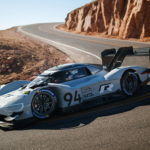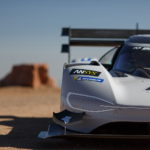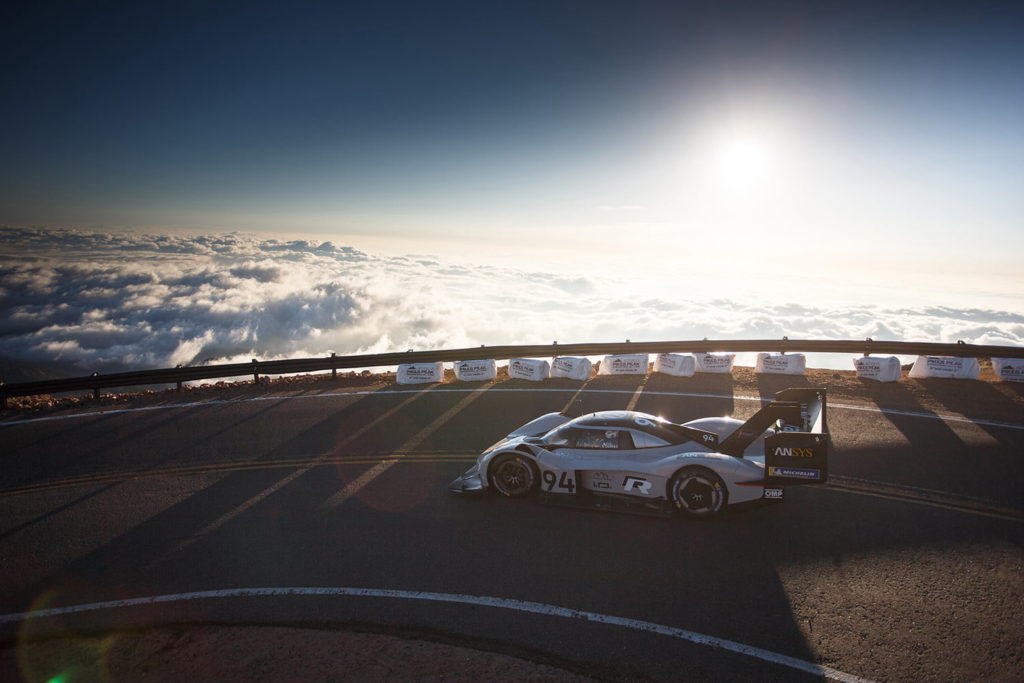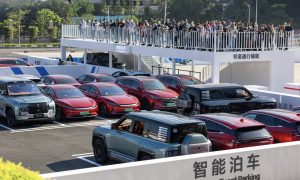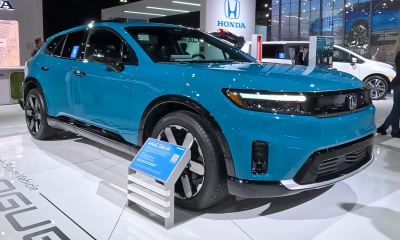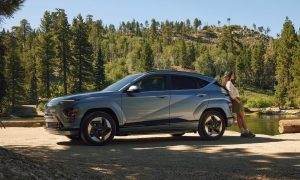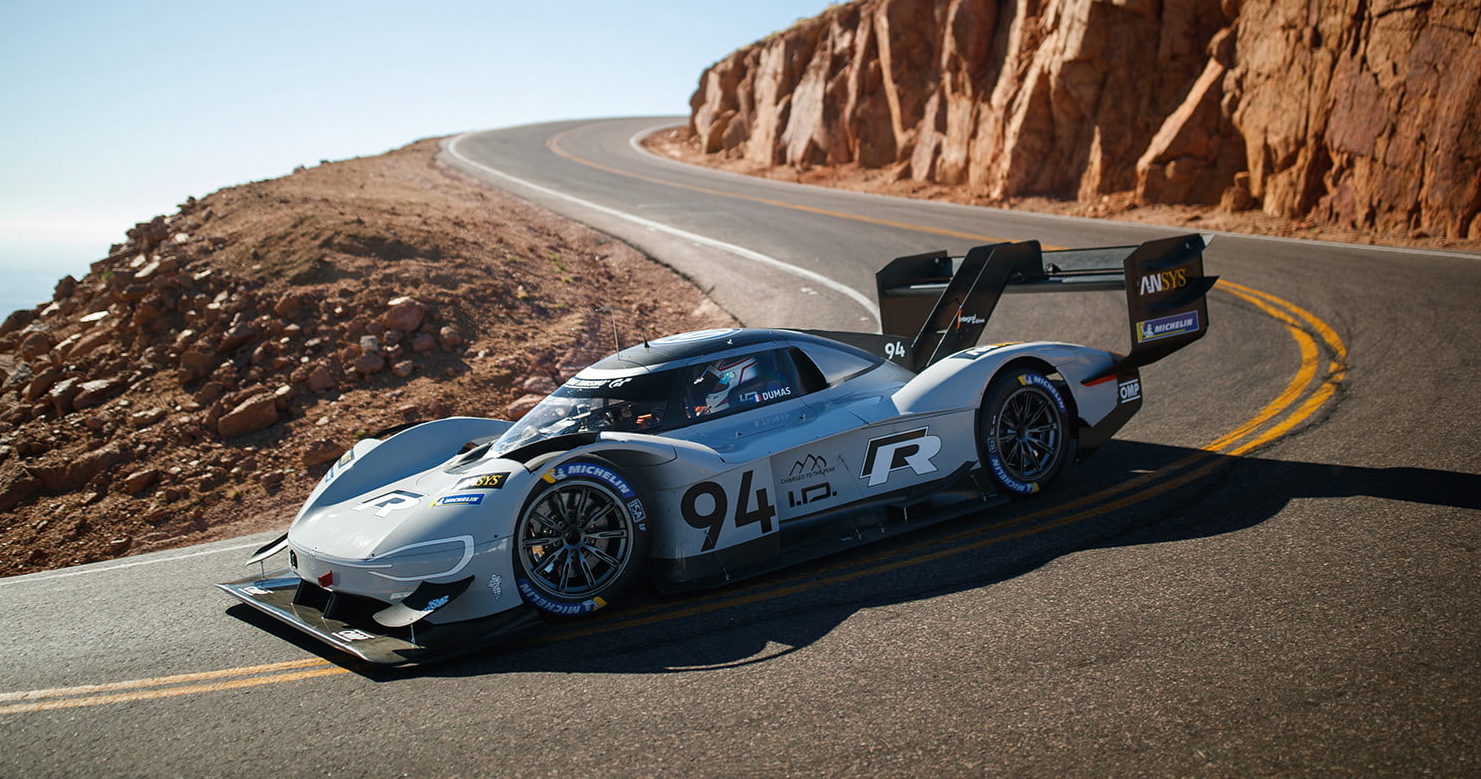

Lifestyle
Why electric vehicles will continue to dominate Pikes Peak after record-shattering run
The Pikes Peak International Hill Climb happens every June in Colorado, sending cars from the base of Pikes Peak up to its top in an arduous climb to a 14,000 feet elevation. The speeds gained are not spectacular by today’s racing standards, but the climb itself is a mixture of brute power and endurance like no other race in the world.
Climbing Pikes Peak even on a normal day is not easily done. Most production vehicles will struggle to get to the summit and many will fail to do so. That’s under standard driving conditions on what is now a fully-paved roadway. The reasons for this are many, but boil down to altitude, the uphill grade, and the huge number of curves in the 12.42-mile road into the clouds.
This year, the Pikes Peak IHC record was blasted through by an electric car. Not for the first time, but so definitively that it’s considered a huge milestone. The car was a Volkswagen purpose-built design whose name specifies what it’s for: the I.D. R Pikes Peak. Meant to showcase the electrification efforts of VW’s new I.D. brand, the car was built specifically to make the Pikes Peak hill climb as quickly as possible. The engineering behind the car is amazing.
Before we talk about that, though, an understanding of what’s at stake at Pikes Peak and how difficult this race really is should be had.
About the Hill Climb
The Pikes Peak International Hill Climb has been the go-to endurance race for high-altitude automotive for over a century. As the second-oldest race in the United States, the Pikes Peak IHC starts at mile marker 7 on the Pikes Peak Highway and runs right up to the top of the roadway’s end 12.42 miles up. There are 156 turns going up the mountain and driver and vehicle gain nearly 5,000 feet in altitude during the climb. The highest point in the race reaches into the sky to over 14,000 feet above sea level.
This amount of climb at that altitude poses significant challenges for race teams. The thin air means less oxygen for driver and machine, sapping performance considerably. With combustion engines, it means less oxygen for the combustion process. With electrics, it often means less cooling for the batteries and components. Most performance electric vehicles can use significant amounts of energy cooling batteries, which heat up quickly during high-performance driving. Components like electric motors and controllers can similarly have performance drain from heat.
Thus taking a Tesla Model X P100D to Pikes Peak, for example, might be a walk in the park under normal driving conditions, suffering nothing more than a significantly lowered range due to the amount of hill climbing involved. Yet trying to race that X up to the Peak will result in the vehicle overheating and entering limp mode early in the run.
Since 2011 when the Pikes Peak Highway was completely paved, most vehicles, whether electric or not, have been able to make the climb under normal conditions if driven leisurely.
Why Electrics Dominate Pikes Peak
The roadblocks for an EV climbing Pikes Peak versus a combustion-powered vehicle in the same race, are far fewer. With the problems of weight versus range having been conquered for some time, the issue of power delivery versus thermal management is the focus.
One of the first electric vehicles to make headlines for its Pikes Peak International Hill Climb run was the Drive eO PP03. Its race time, an impressive 9 minutes, 7.22 seconds, however, was not the reason it was noticed. It was noticed because it was an electric car piloted by rally champion and well-known Pikes Peak racer Rhys Millen. And the PP03 beat the expected EV winner, Nobuhiro Tajima, by over 20 seconds.
Since then, an EV has made headlines in every Pikes Peak race. None, until this year, have beaten the 2013 record set by Sebastian Loeb in a specially-modified Peugeot 208. That record, at 8 minutes and 57 seconds, was compared to how long it takes to fly a helicopter, vertically, from the base to the summit.
That record is no more. Thanks to Volkswagen.
The Volkswagen I.D. R Pikes Peak
This specially-built racer was designed, engineered, tested, and raced in only eight months from start to finish. The car set a Pikes Peak Challenge time of just 7 minutes, 57.148 seconds and its engineers say that if conditions had been perfect on race day, it could have made it even faster. Driver Romain Dumas agreed with that assessment. He also said that the race to the summit is far tougher than an entire 24 Hours of Le Mans run.
The secret is in the battery balance of size, weight, and power delivery. There are two battery packs, each running alongside the driver at the center of the chassis. Each pack powers an electric motor. The entire vehicle weighs under 2,500 pounds and produces 670 horsepower of output. It’s 0-60 mph time is 2.2 seconds, faster than a Formula 1 car, and it can sustain that kind of power output for the duration of its charge. Without becoming crippled by heat.
Rather than add weight- and power-expensive cooling, Volkswagen chose to leave the batteries without thermal management. Instead, airflow around and through the car is critical to its success. The bodywork of the I.D. R Pikes Peak is designed in a way similar to Sprint and Formula race cars, aimed towards managing airflow carefully in order to maximize performance capability. Where a combustion-powered car would direct airflow into the engine through ducting and around the engine for cooling, the I.D. R instead focuses airflow around the batteries and components for maximum cooling (even at thin-air altitudes). It also maximizes airflow around the wheels, as per a Formula car, to maximize downward thrust and improve traction for both straightaways and corners.
This was coupled with a design made specifically for the Pikes Peak climb. The course is just over 12 miles long, so the batteries were sized and formulated to give enough power to run full-throttle for about 13 miles. Cell chemistry is designed to store maximum power and then deliver it at high volume for a sustained amount of time. Unlike production car batteries, of course, VW’s batteries in the I.D. R Pikes Peak don’t have to meet production-level warranty requirements or cycle lifespans.
By perfectly balancing the car’s aerodynamics, cooling flow, battery size, weight distribution, and power delivery, the VW team was able to shatter the previous record for the Pikes Peak International Hill Climb. It’s likely that this record will remain for some time.
Going forward, it’s clear that the advantages electric vehicles have in a race like the Pikes Peak IHC are many and most of the roadblocks towards keeping them out of the running are now surmounted. Combustion engines may continue to win this particular race, on occasion, but it’s very unlikely that they’ll dominate from here on out. For perspective, Rhys Millen, who previously won the EV record, was driving a Bentley SUV with a 12-cylinder engine and took almost 11 minutes to finish the race.
https://www.youtube.com/watch?v=0c3ndL0mSAQ
Lifestyle
EV fans urge Tesla to acquire Unplugged Performance for edge in fleet and security industry
Unplugged Performance has built a name for itself by producing performance upgrades for Tesla vehicles.
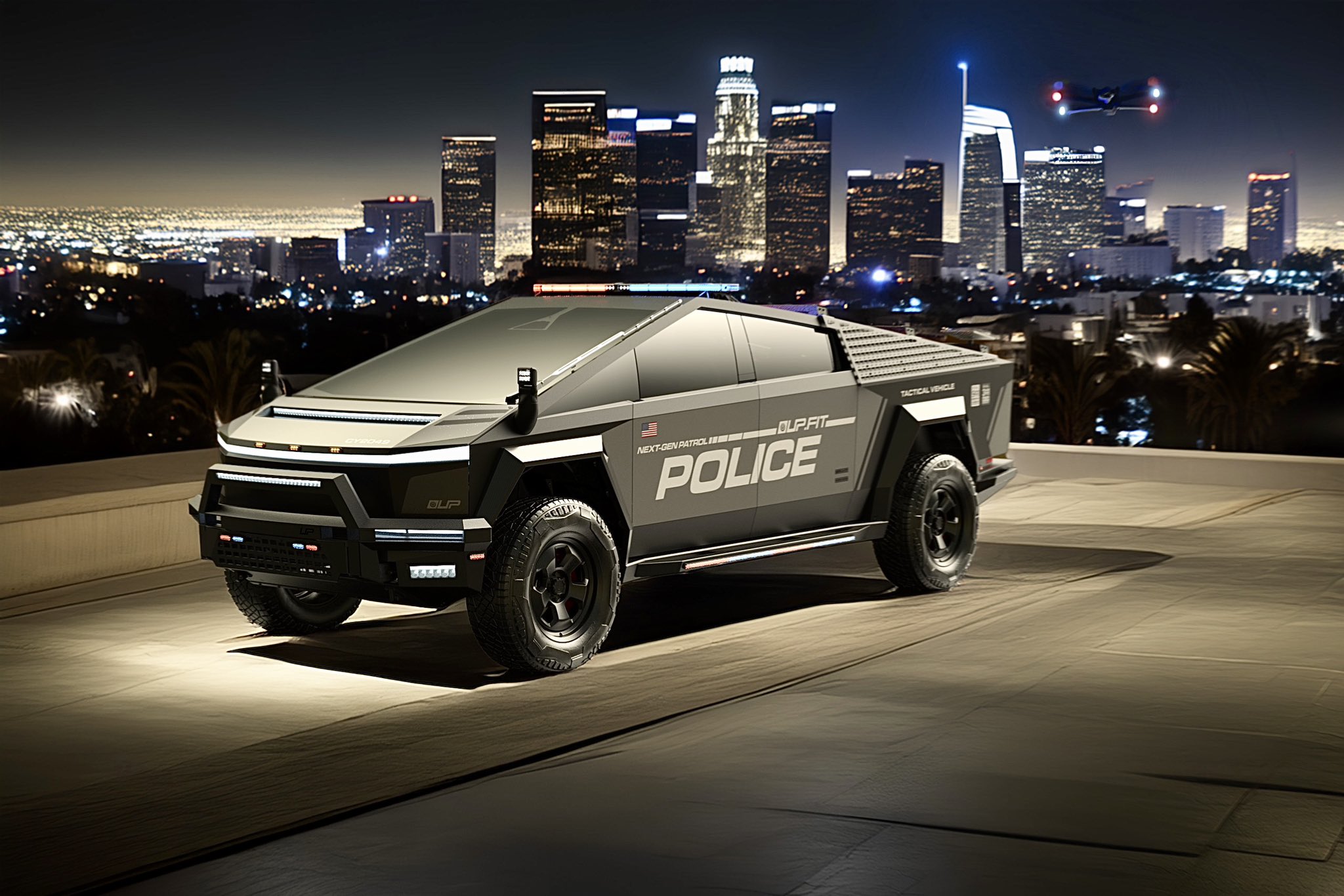
A growing number of Tesla enthusiasts and longtime community voices are calling on the electric vehicle maker to acquire Unplugged Performance, a California-based aftermarket company best known for tuning Tesla vehicles and developing specialized government fleet solutions under its UP.FIT division.
The idea was once considered a niche proposal among EV fans, but it is now gaining serious attention not just as a performance play but as a strategic move to deepen Tesla’s roots in the fleet and security industry.
A strategic fit
Unplugged Performance has built a name for itself by producing performance upgrades for Tesla vehicles, from track-optimized components to visual and aerodynamic upgrades. But in recent years, its UP.FIT division has pivoted toward a more functional future by outfitting Tesla vehicles like Model Ys for police, military, and government use.
That work has sparked growing calls for closer collaboration with Tesla, especially as the EV maker increasingly leans into autonomy, AI, and fleet services as core components of its next chapter.
“I posted this four years ago, but I think it’s more true now than ever,” wrote Whole Mars Catalog, a well-known Tesla investor and FSD Beta tester, on X. “Tesla should buy Unplugged. But not just as a Performance division. What they are doing with UP.FIT unlocks large government and commercial fleet purchases that can improve utilization.”
Tesla fans such as shareholder Sawyer Merritt echoed the sentiment, calling Unplugged a “great fit within Tesla.” adding, “They are literally located directly next to Tesla’s design studio in Hawthorne.”
Enabling the next wave
Supporters of the idea noted that integrating Unplugged into Tesla’s corporate structure could help accelerate the adoption of autonomous technologies in government sectors. With UP.FIT patrol cars already in use across some U.S. police departments, Tesla fans envisioned a future where self-driving Teslas could potentially revolutionize law enforcement, search-and-rescue, and public service logistics.
“Just imagine how autonomous patrol cars could transform policing and bring us into a safer future,” the veteran FSD tester wrote.
The benefits could also extend to Tesla’s existing consumer base. “They also have some incredible products in the works that I think will appeal to many ordinary Tesla drivers — not just those looking for performance or mods. Stuff that’s so good it should have come straight from the design studio next door,” Whole Mars Catalog noted.
Unplugged Performance, founded in 2013, shares not just a product vision with Tesla, but also geography. Its Hawthorne headquarters sits directly adjacent to Tesla’s design studio, and the two companies have maintained a close working relationship over the years. The aftermarket firm has long positioned itself as a “mission-aligned” partner to Tesla.
In response to the recent calls for acquisition, Unplugged Performance acknowledged the support from the community. “Our very existence is to support the Tesla mission with @UpfitTesla and @UnpluggedTesla,” Unplugged CEO Ben Schaffer posted on X. “We love working with Tesla and are grateful for the community’s support since 2013!”
Elon Musk
X account with 184 followers inadvertently saves US space program amid Musk-Trump row
Needless to say, the X user has far more than 184 followers today after his level-headed feat.

An X user with 184 followers has become the unlikely hero of the United States’ space program by effectively de-escalating a row between SpaceX CEO Elon Musk and President Donald Trump on social media.
Needless to say, the X user has far more than 184 followers today after his level-headed feat.
A Near Fall
During Elon Musk and Donald Trump’s fallout last week, the U.S. President stated in a post on Truth Social that a good way for the United States government to save money would be to terminate subsidies and contracts from the CEO’s companies. Musk responded to Trump’s post by stating that SpaceX will start decommissioning its Dragon spacecraft immediately.
Musk’s comment was received with shock among the space community, partly because the U.S. space program is currently reliant on SpaceX to send supplies and astronauts to the International Space Station (ISS). Without Dragon, the United States will likely have to utilize Russia’s Soyuz for the same services—at a significantly higher price.
X User to the Rescue
It was evident among X users that Musk’s comments about Dragon being decommissioned were posted while emotions were high. It was then no surprise that an X account with 184 followers, @Fab25june, commented on Musk’s post, urging the CEO to rethink his decision. “This is a shame this back and forth. You are both better than this. Cool off and take a step back for a couple days,” the X user wrote in a reply.
Much to the social media platform’s surprise, Musk responded to the user. Even more surprising, the CEO stated that SpaceX would not be decommissioning Dragon after all. “Good advice. Ok, we won’t decommission Dragon,” Musk wrote in a post on X.
Not Planned, But Welcomed
The X user’s comment and Musk’s response were received extremely well by social media users, many of whom noted that @Fab25june’s X comment effectively saved the U.S. space program. In a follow-up comment, the X user, who has over 9,100 followers as of writing, stated that he did not really plan on being a mediator between Musk and Trump.
“Elon Musk replied to me. Somehow, I became the accidental peace broker between two billionaires. I didn’t plan this. I was just being me. Two great minds can do wonders. Sometimes, all it takes is a breather. Grateful for every like, DM, and new follow. Life’s weird. The internet’s weirder. Let’s ride. (Manifesting peace… and maybe a Model Y.)” the X user wrote.
Lifestyle
Tesla Cybertruck takes a bump from epic failing Dodge Charger
The Cybertruck seemed unharmed by the charging Charger.
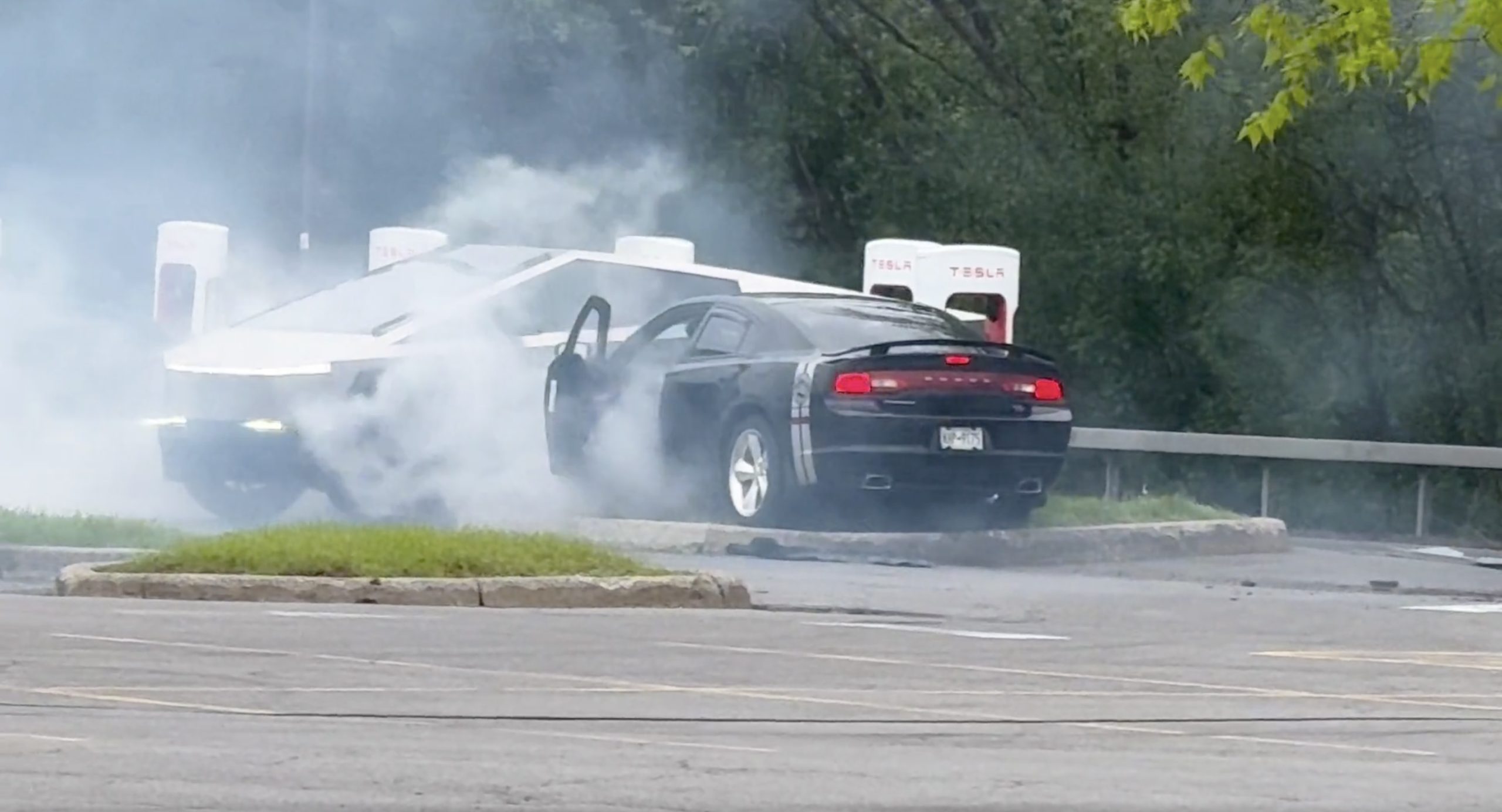
There comes a time in a driver’s life when one is faced with one’s limitations. For the driver of a Dodge Charger, this time came when he lost control and crashed into a Tesla Cybertruck–an absolute epic fail.
A video of the rather unfortunate incident was shared on the r/TeslaLounge subreddit.
Charging Charger Fails
As could be seen in the video, which was posted on the subreddit by Model Y owner u/Hammer_of_something, a group of teens in a Dodge Charger decided to do some burnouts at a Tesla Supercharger. Unfortunately, the driver of the Charger failed in his burnout or donut attempt, resulting in the mopar sedan going over a curb and bumping a charging Cybertruck.
Ironically, the Dodge Charger seemed to have been parked at a Supercharger stall before its driver decided to perform the failed stunt. This suggests that the vehicle was likely ICE-ing a charging stall before it had its epic fail moment. Amusingly enough, the subreddit member noted that the Cybertruck did not seem like it took any damage at all despite its bump. The Charger, however, seemed like it ran into some trouble after crashing into the truck.
Alleged Aftermath
As per the the r/TeslaLounge subreddit member, the Cybertruck owner came rushing out to his vehicle after the Dodge Charger crashed into it. The Model Y owner then sent over the full video of the incident, which clearly showed the Charger attempting a burnout, failing, and bumping into the Cybertruck. The Cybertruck owner likely appreciated the video, in part because it showed the driver of the Dodge Charger absolutely freaking out after the incident.
The Cybertruck is not an impregnable vehicle, but it can take bumps pretty well thanks to its thick stainless steel body. Based on this video, it appears that the Cybertruck can even take bumps from a charging Charger, all while chilling and charging at a Supercharger. As for the teens in the Dodge, they likely had to provide a long explanation to authorities after the incident, since the cops were called to the location.
-

 Elon Musk2 weeks ago
Elon Musk2 weeks agoTesla investors will be shocked by Jim Cramer’s latest assessment
-

 News2 days ago
News2 days agoTesla debuts hands-free Grok AI with update 2025.26: What you need to know
-

 Elon Musk4 days ago
Elon Musk4 days agoxAI launches Grok 4 with new $300/month SuperGrok Heavy subscription
-

 Elon Musk7 days ago
Elon Musk7 days agoElon Musk confirms Grok 4 launch on July 9 with livestream event
-

 News1 week ago
News1 week agoTesla Model 3 ranks as the safest new car in Europe for 2025, per Euro NCAP tests
-

 Elon Musk2 weeks ago
Elon Musk2 weeks agoxAI’s Memphis data center receives air permit despite community criticism
-

 News4 days ago
News4 days agoTesla begins Robotaxi certification push in Arizona: report
-

 Elon Musk2 weeks ago
Elon Musk2 weeks agoTesla scrambles after Musk sidekick exit, CEO takes over sales

